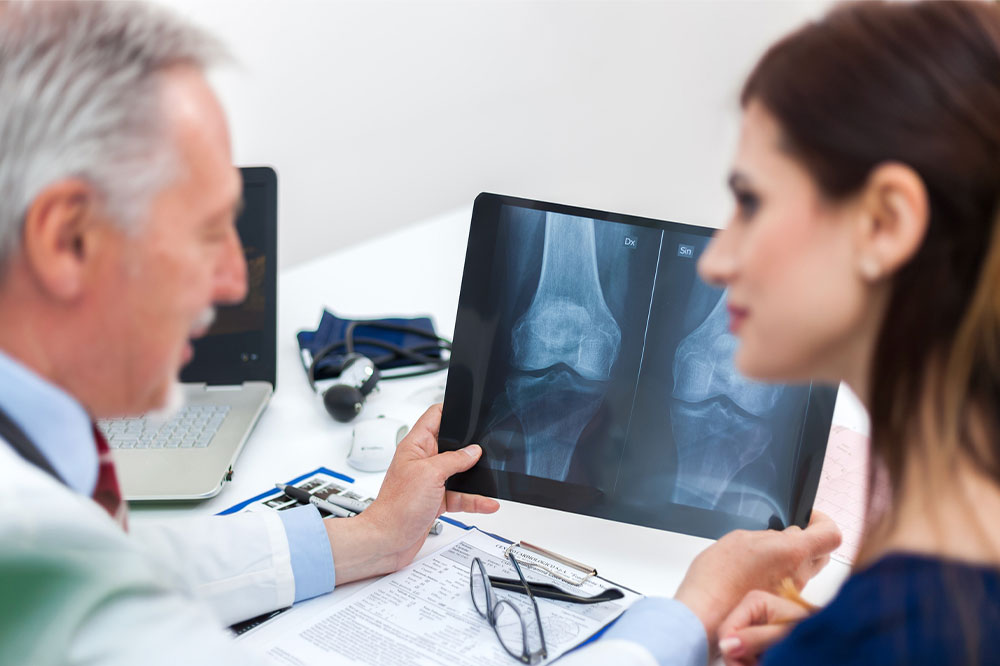8 warning signs of low bone density

Sometimes the creation of new bone cannot keep up with the loss of old material, known as osteoporosis. The condition could result in symptoms that may affect one’s ability to carry out daily tasks. A healthcare expert may recommend prescriptions and lifestyle changes to manage bone complications. But these treatment options may work better if the condition is diagnosed early. So here are eight signs of low bone mineral density that must be addressed immediately.
Receding gums
The gums may recede due to multiple factors, including aggressive brushing, genetics, and other unhealthy habits. However, this sign could also indicate a reduction in bone density. The oral complication is usually subtle and might require an expert’s opinion. Furthermore, the teeth and jaw bones are connected. So when the latter starts to lose bone mineral density, it could result in receding gums, which may also affect the health of teeth.
Weakened grip strength
The loss of grip strength could be an indicator of low bone mineral density triggered by osteoporosis. Some common signs that one should look for include the reduced ability to open doors easily, push objects, or grab onto structures properly. These are signs that the individual may have lost muscle strength. An individual may assess if they have lost grip strength by visiting a healthcare expert’s place of practice or checking it at home with the help of a hand dynamometer.
Brittle, weak fingernails
Someone may develop weak or brittle fingernails due to engagement in activities like swimming or gardening. But if individuals notice that their fingernails are unusually brittle or weak, they must consult a healthcare provider immediately. The sign may indicate reduced bone mineral density due to the lack or low amounts of calcium, an essential bone-building nutrient.
Loss of height
The loss of height is related to aging changes in the bones, joints, and muscles. Usually, a person may lose a centimeter of height every ten years once they pass age 40. The loss is much more rapid after one crosses age 70. But if an individual notices a reduction in height before turning 40, it could indicate low bone mineral density caused by osteoporosis. Such symptoms require the opinion of an expert who will offer treatment options to slow down the progression of the disease.
Rapid heart rate
A resting heart rate is the number of times the heart beats per minute when the body is not engaged in the activity. The average resting heart rate for most individuals is between 60 to 100 beats per minute. However, anything above 80 beats per minute could be a warning sign of low bone mineral density. Such increased heart rate is associated with an increased risk of pelvis, hip, and spine fractures, especially in older women.
Bones that easily fracture
Bone fractures are one of the earliest signs of low bone mineral density. The lack of strength in the bones could lead to more severe injuries, even if an individual has a mild fall or faces other bone trauma. One may also fracture their bones by applying excessive pressure on their feet or sneezing. Such complications are clear indicators of osteoporosis that must be diagnosed and treated by a healthcare expert.
Pain in the back or neck
An individual may develop pain in their neck or back due to a poor sleeping posture or because they pull a muscle. However, pain radiating from these parts of the body without any visible cause might indicate poor bone density. That lack of bone-building material may result in compression fractures of the spine. The pain may occur because the collapsed vertebrae might pinch the nerves in the spinal region. Some people may experience mild pain, while others may be susceptible to an unbearable sensation in this region. In either case, it is imperial to get the opinion of a healthcare professional. The fractures of the spine may also cause a slight curve of the upper back (kyphosis), which may also trigger pain in the neck and back. The unusual posture may also apply additional pressure on the airway and limit lung expansion, which may result in breathing difficulties.
A decline in physical fitness
An individual who is healthy but starts to notice an unusual decline in their physical fitness might be suffering from low bone mineral density. They should look for signs such as poor balance, decreased muscle strength, and reduced aerobic abilities. Therefore, if an individual finds it unusually difficult to move around, dance, or indulge in daily activities, they should visit an expert for an opinion.






